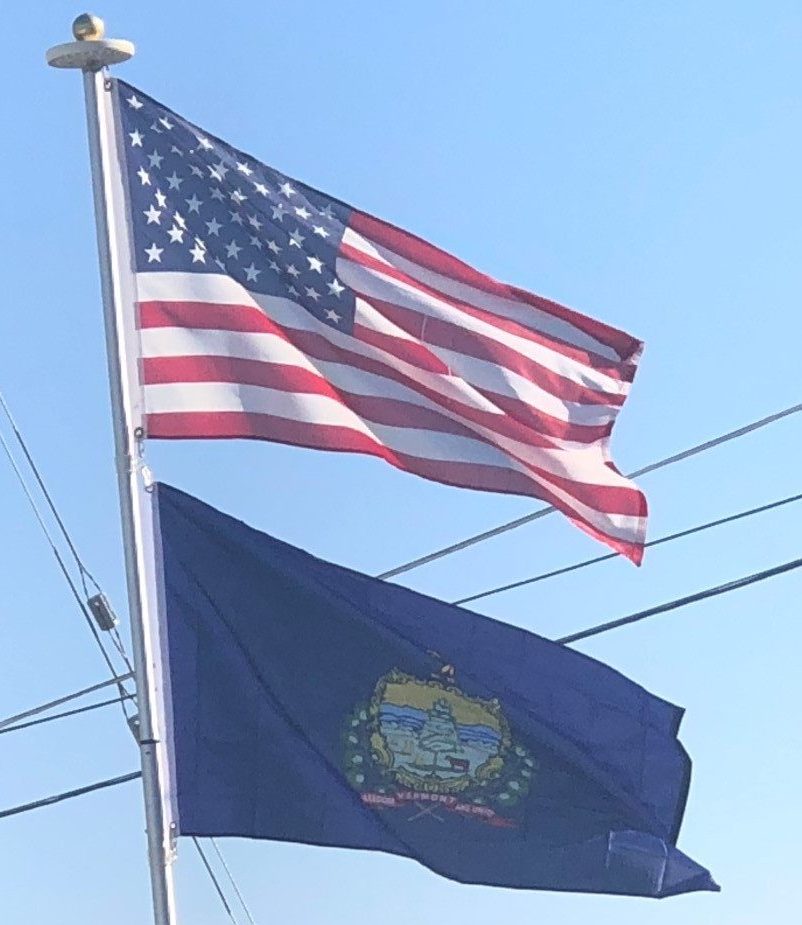The battles of Bennington and Saratoga together are recognized as the turning point in the Revolutionary War because they were the first major defeat of a British army. The anniversary of the battle is still celebrated in Vermont as a legal holiday.
Vermont continued to govern itself as a sovereign entity based in the eastern town of Windsor for 14 years. The independent state of Vermont issued its own coinage from 1785 to 1788 and operated a statewide postal service. Thomas Chittenden was the Governor in 1778–89 and in 1790–91.
Because the state of New York continued to assert a disputed claim that Vermont was a part of New York, Vermont could not be admitted to the Union under Article IV, Section 3 of the Constitution until the legislature of New York consented. Congress acted on February 18, 1791 to admit Vermont to the Union as the 14th state as of March 4, 1791. Vermont became the first to enter the Union after the original 13 states.
During the American Civil War, Vermont sent 33,288 men into United States service.
Beginning in the mid-19th century, Vermont attracted numerous Irish, Scots-Irish and Italian immigrants, adding to its residents of mostly English and French-Canadian ancestry.
Economy:
According to the 2010 U.S. Bureau of Economic Analysis report, Vermont’s gross state product (GSP) was $26 billion. Not accounting for size, this places the state 50th among the 50 states.
Major contributors to the Vermont economy include: government spending; real estate, rental, and leasing; durable goods manufacturing; health care and social assistance; retail trade; finance and insurance; construction; professional and technical services; wholesale trade; accommodations and food services.
Other revenue sources account for less the $1 billion annually and/or less than 5% of the total.
Agriculture contributed 2.2% of the state’s domestic product in 2000
Dairy farming is the primary source of agricultural income. Still, the number of Vermont dairy farms has declined more than 85% from the 11,206 dairy farms operating in 1947. In 2007 there were 1,087. The number of dairy farms has been diminishing by 10% annually.

The number of cattle in Vermont had declined by 40%; however, milk production has doubled in the same period due to tripling the production per cow. While milk production rose, Vermont’s market share declined.
Forest products have always been a staple to the economy, comprising 1% of the total gross state output and 9% of total manufacturing as of 2013.
An important and growing part of Vermont’s economy is the manufacture and sale of artisan foods, fancy foods, and novelty items trading in part upon the Vermont “brand,” which the state manages and defends. Examples of these specialty exports include Cabot Cheese, the Vermont Teddy Bear Company, Fine Paints of Europe, Vermont Butter and Cheese Company, several microbreweries, ginseng growers, Burton Snowboards, King Arthur Flour, and Ben and Jerry’s Ice Cream.
There were about 2,000 maple products producers in 2010. Production rose to 920,000 US gallons in 2009. The state’s share of the nation’s production rose to 42% in 2013.
